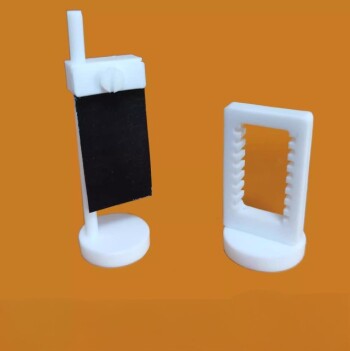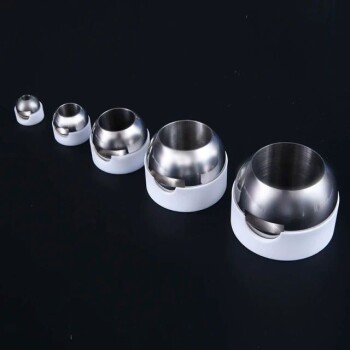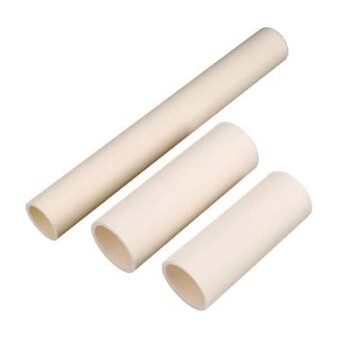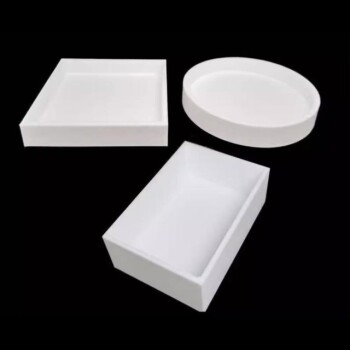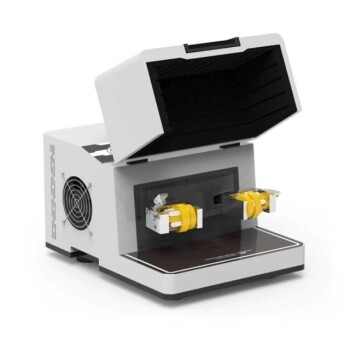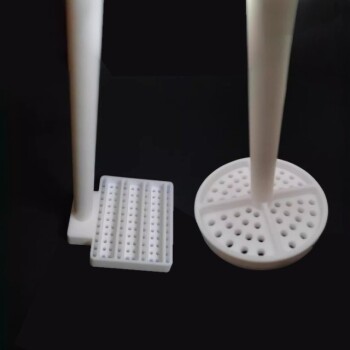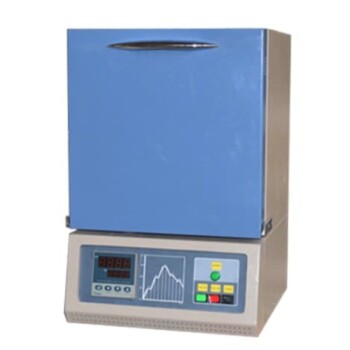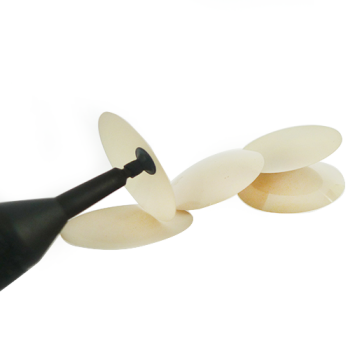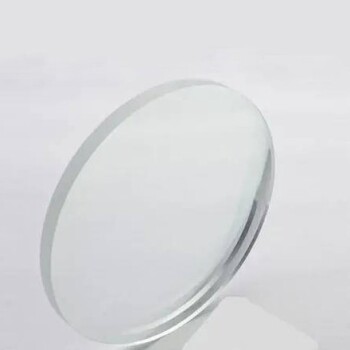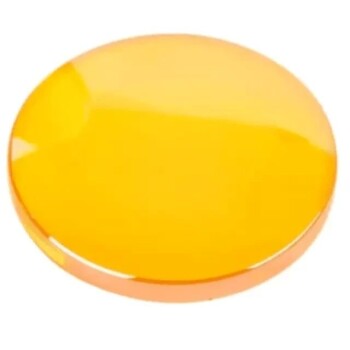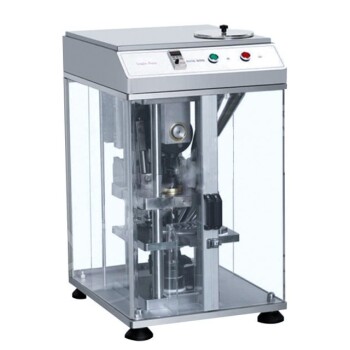정밀 세라믹 소개
중요성 및 적용 분야
정밀 세라믹 부품은 뛰어난 기계적 특성과 극한 조건에서의 복원력으로 인해 다양한 첨단 기술에서 중추적인 역할을 담당하고 있습니다. 다음과 같은 분야에서 집적 회로 제조 에서 이러한 부품은 반도체 장치에 요구되는 높은 정밀도와 신뢰성을 유지하는 데 없어서는 안 될 필수 요소입니다. 강도와 경도가 높아 성능 저하 없이 제조 공정의 까다로운 요구 사항을 견딜 수 있습니다.
In 레이저 기술 정밀 세라믹은 고에너지 레이저 조사에서도 구조적 무결성을 유지하는 능력으로 활용됩니다. 열 충격에 대한 내성과 광학적 선명도 덕분에 의료용 레이저 및 산업용 절삭 공구와 같이 정밀한 레이저 빔 조작이 중요한 분야에 이상적입니다.
감지 분야 감지 분야 정밀 세라믹의 고감도 및 안정성의 이점을 크게 누릴 수 있습니다. 이러한 부품은 환경 모니터링 시스템 및 산업 자동화와 같이 정확하고 신뢰할 수 있는 데이터 수집이 필요한 센서에 자주 사용됩니다. 내구성이 뛰어나 열악한 환경에서도 장기적인 성능을 보장합니다.
초전도 기술 정밀 세라믹의 고유한 특성을 활용하여 고온 초전도성을 달성합니다. 이러한 소재는 낮은 전기 저항과 높은 전류 밀도를 필요로 하는 초전도 자석 및 기타 부품 개발에 필수적입니다. 기존 초전도체보다 더 높은 온도에서 작동할 수 있어 에너지 효율적인 기술에 대한 새로운 가능성을 열어줍니다.
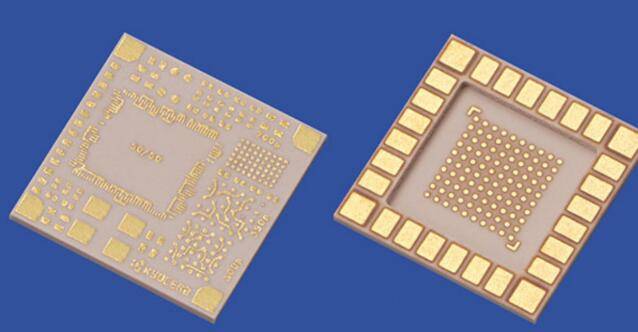
분야 생의학 응용 분야 정밀 세라믹은 생체 적합성과 기계적 강도로 높은 평가를 받고 있습니다. 정밀 세라믹은 인체와 매끄럽게 통합되어야 하는 임플란트 및 보철물에 사용됩니다. 세라믹은 부식과 마모에 강하기 때문에 이러한 의료 기기가 오랜 기간 동안 효과를 유지하여 환자 치료 결과를 개선하고 잦은 교체 필요성을 줄여줍니다.
전반적으로 정밀 세라믹 부품의 다목적성과 견고성은 여러 기술 영역에서 필수 불가결한 요소로 혁신을 주도하고 핵심 시스템의 성능을 향상시킵니다.
도전 과제와 한계
정밀 세라믹은 고강도, 극한 환경에 대한 내성 등 다양한 장점을 제공하지만, 생산과 사용을 복잡하게 만드는 중대한 과제를 안고 있습니다. 주요 문제 중 하나는 고유의 높은 경도와 취성으로 인해 가공이 어렵기로 악명이 높다는 점입니다. 이러한 특성은 제조 공정의 복잡성을 증가시킬 뿐만 아니라 기계적 스트레스를 받으면 재료에 균열과 파손이 발생하기 쉽습니다.
정밀 세라믹의 취성 때문에 특수 가공 기술을 사용해야 하며, 이는 종종 높은 운영 비용을 수반합니다. 예를 들어, 기존의 절삭 방식은 소재의 변형에 대한 저항성으로 인해 효율성이 떨어지고 절삭 공구의 마모가 증가하고 에너지 소비가 증가합니다. 또한 가공 중 미세 균열이 발생할 위험이 있어 최종 제품의 전반적인 품질과 성능이 저하되어 생산 비용이 더욱 증가할 수 있습니다.
또한 세라믹의 높은 경도는 유연성과 성형 용이성이 요구되는 특정 시나리오에서 적용 가능성을 제한할 수 있습니다. 또한 이러한 경도는 동적 조건에 대한 적응성과 복원력이 필요한 시스템에 정밀 세라믹 부품을 통합하는 데 어려움을 초래할 수 있습니다.
요약하면, 정밀 세라믹은 성능 특성으로 인해 매우 바람직하지만 높은 경도와 취성으로 인해 비용 증가와 제품 결함 가능성 등 제조상 상당한 장애물이 존재합니다. 이러한 문제를 해결하려면 성능과 제조 가능성 간의 균형을 최적화하기 위한 혁신적인 가공 기술과 신중한 재료 선택이 필요합니다.
정밀 세라믹을 위한 준비 기술
사출 성형
세라믹 사출 성형(CIM)은 전통적인 폴리머 사출 기술과 첨단 세라믹 준비 방법을 결합한 정교한 공정입니다. 이 혁신적인 접근 방식을 통해 뛰어난 치수 정확도와 균일한 밀도로 복잡한 소규모 세라믹 부품을 제작할 수 있습니다. 이 공정은 미세 세라믹 분말과 폴리머 바인더를 혼합한 다음 고압으로 금형에 주입하는 것으로 시작됩니다. 부품이 형성되면 디바인딩 공정을 통해 바인더를 제거한 다음 소결하여 최종 세라믹 구조를 완성합니다.
CIM의 주요 장점 중 하나는 기존의 세라믹 성형 방법으로는 달성하기 어렵거나 불가능한 복잡한 형상을 제작할 수 있다는 점입니다. 이 기능은 고성능 정밀 엔지니어링 부품에 대한 수요가 가장 중요한 항공우주, 의료 기기 및 전자 제품과 같은 산업에서 특히 유용합니다. CIM을 통해 달성한 밀도의 균일성은 전체 부품에 걸쳐 일관된 기계적 특성을 보장하며, 이는 신뢰성과 내구성이 요구되는 애플리케이션에 매우 중요합니다.
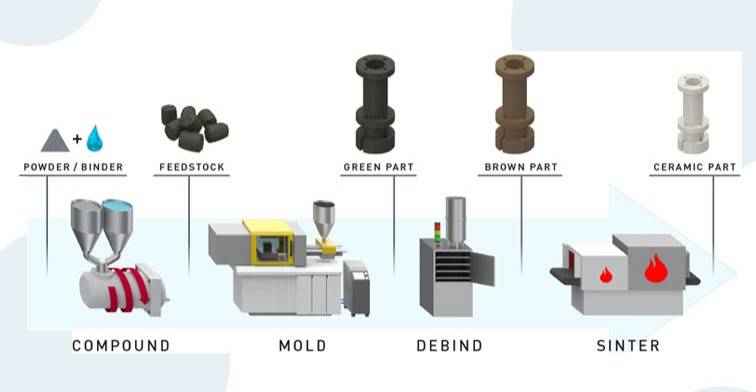
또한 CIM은 기존 세라믹 제조 방식에 비해 상당한 비용 절감과 효율성 향상을 제공합니다. 그물 모양에 가까운 부품을 생산할 수 있는 CIM은 광범위한 후처리의 필요성을 줄여 재료 낭비와 생산 시간을 줄여줍니다. 이러한 효율성은 사출 성형 공정을 자동화할 수 있는 기능으로 더욱 향상되어 일관된 품질과 인건비 절감으로 이어집니다.
요약하자면, 세라믹 사출 성형은 폴리머 가공과 세라믹 엔지니어링 사이의 간극을 메우는 최첨단 기술로, 뛰어난 성능 특성을 갖춘 고정밀 세라믹 부품을 생산할 수 있는 다목적 솔루션을 제공합니다.
사출 젤 성형
인젝션 겔 성형은 전통적인 세라믹 성형 기술과 정교한 유기 중합 방법을 완벽하게 통합하는 세라믹 제조의 중요한 발전을 나타냅니다. 이 혁신적인 공정은 특히 크고 복잡한 세라믹 부품을 제작하는 데 필수적인 그물망 크기에 가까운 고강도 세라믹 블랭크를 생산하는 데 유리합니다. 원하는 모양과 강도를 얻기 위해 광범위한 후처리가 필요한 기존 방식과 달리, 사출 젤 성형은 성형 사이클 시간을 크게 단축하여 생산 효율성을 향상시킵니다.
이 공정은 세라믹과 폴리머 재료의 장점을 모두 활용하여 기존 방법으로는 달성하기 어려웠던 복잡한 형상을 만들 수 있습니다. 이러한 기술을 결합하여 제조업체는 균일한 밀도와 우수한 기계적 특성을 갖춘 세라믹 부품을 생산할 수 있으므로 높은 정밀도와 내구성이 요구되는 애플리케이션에 이상적입니다. 이 방법은 생산 공정을 간소화할 뿐만 아니라 재료 낭비를 최소화하여 보다 지속 가능한 제조 환경에 기여합니다.
요약하자면, 사출 젤 성형은 기존 세라믹 성형의 한계를 극복하는 최첨단 기술로, 복잡한 모양과 짧은 성형 주기를 가진 고성능 세라믹 부품을 생산할 수 있는 다목적 솔루션을 제공합니다.
3D 프린팅 몰딩
3D 프린팅은 전례 없는 속도와 효율성으로 매우 복잡한 부품을 제작할 수 있게 함으로써 정밀 세라믹 제조에 혁신을 가져왔습니다. 기존 성형 방식과 달리 3D 프린팅은 첨단 CAD(컴퓨터 지원 설계)와 제조 공정을 통합하여 금형 없이도 재료를 층별로 증착할 수 있습니다. 이 방법은 기존 기술로는 제작하기 어렵거나 불가능한 복잡한 세라믹 부품을 제작하는 데 특히 유리합니다.
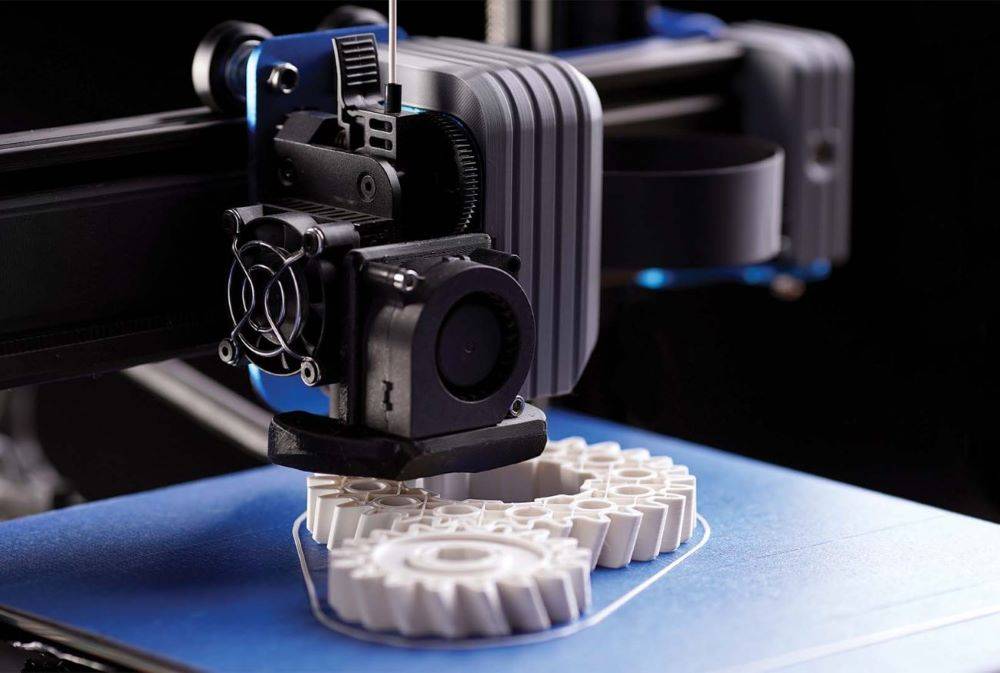
3D 프린팅의 유연성은 특정 애플리케이션에 활용할 수 있는 고유한 특성을 가진 다양한 세라믹 재료로 확장됩니다. 예를 들어 지르코니아, 알루미나, 실리콘 질화물은 강도가 높고 극한 조건에 대한 저항성이 뛰어나 3D 프린팅에 일반적으로 사용됩니다. 이러한 재료를 복잡한 형상으로 프린팅할 수 있기 때문에 최종 제품이 정확한 치수 요구 사항과 성능 표준을 충족할 수 있습니다.
또한 3D 프린팅은 여러 툴링 설정과 중간 단계가 필요 없기 때문에 제조에 필요한 시간을 크게 단축할 수 있습니다. 이 간소화된 프로세스는 생산 속도를 높일 뿐만 아니라 폐기물을 최소화하여 환경 친화적인 옵션입니다. 다음 표는 세라믹 제조에서 3D 프린팅의 주요 이점을 강조합니다:
| 이점 | 설명 |
|---|---|
| 높은 복잡성 | 금형으로는 구현하기 어려운 복잡한 형상을 만들 수 있습니다. |
| 제조 시간 단축 | 여러 툴링 설정과 중간 단계가 필요하지 않습니다. |
| 재료 유연성 | 고유한 특성을 지닌 다양한 세라믹 소재를 지원합니다. |
| 낭비 최소화 | 간소화된 공정으로 재료 낭비를 줄이고 효율성을 높입니다. |
요약하면, 3D 프린팅은 정밀 세라믹 분야의 혁신적 기술로서 복잡성, 속도, 소재의 다양성 측면에서 독보적인 기능을 제공합니다. 제조 공정에 통합되어 다양한 산업 분야에서 혁신적인 솔루션과 성능 향상을 위한 기반을 마련하고 있습니다.
정밀 세라믹을 위한 가공 기술
화학적 기계 연마(CMP)
화학적 기계 연마(CMP)는 반도체 산업에서 중요한 공정으로, 주로 글로벌 평탄화를 달성하는 데 활용됩니다. 이 기술은 고온 및 고압 조건에서 새롭고 부드러운 물질을 생성하는 나노 크기의 연마 입자를 사용합니다. 이 부드러운 물질은 쉽게 제거할 수 있고 반도체 소자의 정밀한 제작에 필수적인 매우 매끄러운 표면을 만들어냅니다.
CMP 공정은 화학적 힘과 기계적 힘의 복잡한 상호작용을 포함하는 매우 정교한 과정입니다. 실리카나 알루미나와 같은 재료로 구성된 연마 입자는 화학 약품이 포함된 슬러리 속에 부유합니다. 이러한 약제는 연마되는 재료의 표면과 반응하여 기계적 마모에 더 취약한 얇은 층을 만듭니다. 화학 반응과 기계적 마모의 조합으로 재료가 균일하게 제거되어 표면이 평평해집니다.
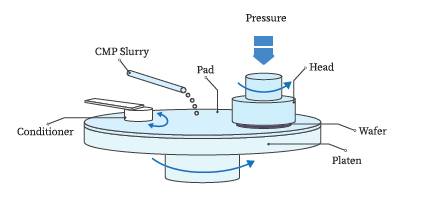
CMP의 주요 장점 중 하나는 다층 반도체 소자 제작에 필수적인 글로벌 평탄화를 달성할 수 있다는 점입니다. 평탄화가 이루어지지 않으면 표면의 불규칙성이 후속 층의 결함으로 이어져 디바이스의 전반적인 성능과 신뢰성에 영향을 미칠 수 있습니다. 또한 매우 매끄러운 표면을 생성하는 CMP의 기능은 결함 발생 가능성을 줄여 반도체 부품의 수율과 품질을 향상시킵니다.
CMP는 반도체 제조에 사용되는 것 외에도 정밀 세라믹 부품 생산에도 응용되고 있습니다. 이 기술은 기본 구조에 큰 손상을 주지 않고 재료를 정밀하게 제거할 수 있기 때문에 단단하고 부서지기 쉬운 재료에 특히 유용합니다. 따라서 CMP는 항공우주, 자동차, 의료 기기 등 다양한 산업에서 사용되는 고성능 세라믹 부품을 제작하는 데 매우 유용한 도구입니다.
하지만 CMP 공정에도 어려움이 없는 것은 아닙니다. 높은 온도와 압력이 필요하기 때문에 장비 마모가 발생하여 유지보수 비용이 증가할 수 있습니다. 또한 슬러리에서 연마 입자와 화학 약품의 선택은 소재에 과도한 손상을 주지 않으면서 효과적인 연마를 보장하기 위해 신중하게 최적화되어야 합니다. 이러한 어려움에도 불구하고 고품질의 매우 매끄러운 표면을 구현하는 CMP의 이점은 정밀 세라믹 분야에서 없어서는 안 될 기술입니다.
자기 유변학적 연마
자기유변학적 연마(MRP)는 정밀 세라믹 분야에서 탁월한 정밀도와 효율성을 제공하는 최첨단 기법으로 각광받고 있습니다. 기존의 연마 기법과 달리 MRP는 자기장의 영향을 받아 유변학적 특성을 변화시키는 스마트 소재인 자기유변학 유체를 활용합니다. 이 독특한 특성 덕분에 연마 공정을 실시간으로 조정할 수 있어 높은 정밀도와 일관성을 보장합니다.
MRP의 가장 큰 장점 중 하나는 공구 마모가 없다는 점입니다. 기존의 연마 방식은 종종 공구 성능 저하로 인해 표면 마감이 불일치하고 공구를 자주 교체해야 하는 경우가 많습니다. 반면, MRP는 자기 유체 유체를 사용하여 이러한 문제를 해결함으로써 공정 전반에 걸쳐 안정적인 제거율과 일관된 표면 품질을 유지합니다.
그러나 MRP를 적용하는 데 어려움이 없는 것은 아닙니다. 이 공정에는 세심한 준비와 정교한 장비가 필요하기 때문에 필연적으로 비용이 증가합니다. MRP 시스템 설정 및 운영의 복잡성과 특수 자재 및 기계와 관련된 높은 비용으로 인해 산업 환경에서 광범위하게 채택되는 데 제약이 있습니다. 정밀 연마에 혁신을 가져올 수 있는 잠재력에도 불구하고 높은 진입 장벽으로 인해 산업 규모가 제한되어 있어 대규모 생산보다는 틈새 고정밀 애플리케이션에 더 적합합니다.
요약하면, MRP는 뛰어난 정밀도, 효율성 및 공구 수명을 제공하지만, 높은 비용과 복잡한 준비 과정으로 인해 산업 적용에 제약이 있습니다. 향후 기술 및 공정 최적화의 발전은 MRP의 접근성과 비용 효율성을 높여 정밀 세라믹 산업에서의 적용 범위를 넓히는 데 필수적입니다.
ELID 연삭
ELID(전해 공정 내 드레싱) 연삭은 기존의 치핑, 연삭, 연마 기술을 통합한 혁신적인 복합 미러 가공 기술입니다. 이 방법은 세라믹 소재의 정밀 가공에 중요한 역할을 하는 약한 전해질이 포함된 수용액을 사용합니다. 구현과 관련된 어려움에도 불구하고 ELID 연삭은 정밀 세라믹 가공의 미래에 큰 가능성을 가지고 있습니다.
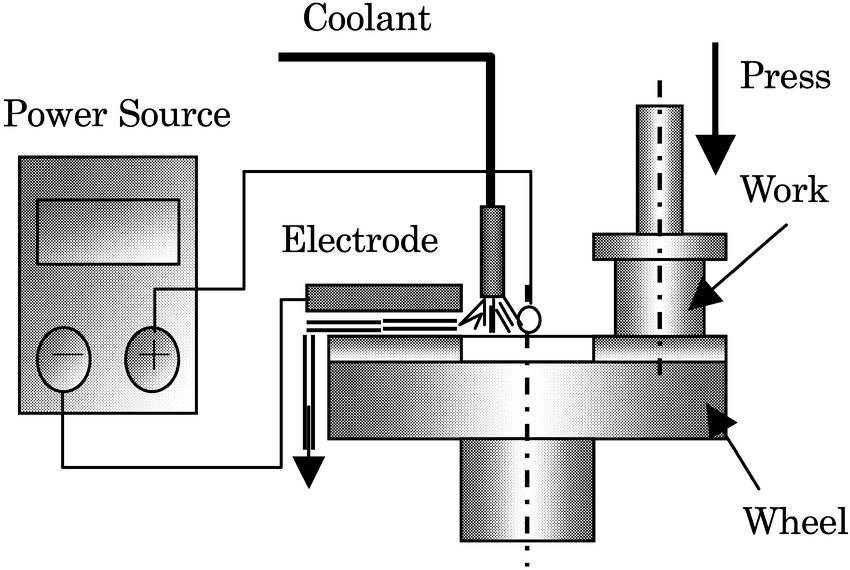
주요 기능 및 이점
-
통합 처리: ELID 연삭은 치핑, 연삭, 연마 등 여러 기존 가공 공정을 하나의 통합된 방법으로 결합합니다. 이러한 통합은 제조 공정을 간소화하여 별도의 단계가 필요하지 않고 잠재적으로 생산 비용을 절감할 수 있습니다.
-
전해 솔루션: 전해질이 약한 수용액을 사용하는 것이 ELID 연삭의 특징입니다. 이 솔루션은 재료를 정밀하게 제거하여 최종 제품의 정확성과 부드러움을 향상시킵니다. 전해 공정은 또한 고품질 결과를 얻기 위해 필수적인 연삭 공구의 선명도를 유지하는 데 도움이 됩니다.
-
정밀 세라믹에 대한 적합성: 정밀 세라믹의 높은 경도와 취성을 고려할 때, 기존의 가공 방법으로는 필요한 정밀도와 표면 품질을 제공하는 데 어려움을 겪는 경우가 많습니다. 이러한 문제를 처리할 수 있는 엘리드 연삭은 정밀 세라믹 부품 가공에 특히 적합합니다.
도전 과제 및 고려 사항
ELID 연삭은 여러 가지 장점을 제공하지만 도전 과제가 없는 것은 아닙니다. 전해 공정의 복잡성과 전해액에 대한 정밀한 제어가 필요하기 때문에 대규모로 구현하기 어려울 수 있습니다. 또한 높은 초기 설치 비용과 특수 장비가 필요하다는 점도 광범위한 도입에 걸림돌이 될 수 있습니다.
이러한 어려움에도 불구하고 ELID 연삭은 정밀 세라믹의 미래를 위한 유망한 기술로 남아 있습니다. 간소화된 공정으로 고품질의 결과를 제공하는 이 기술은 보다 효율적이고 효과적인 세라믹 가공 방법을 지속적으로 모색하는 데 유용한 도구가 될 것입니다.
요약하면, ELID 연삭은 정밀 세라믹 가공 분야에서 중요한 발전을 이루었으며, 이러한 재료가 가진 고유한 문제를 해결하기 위해 전통적인 기술과 혁신적인 기술의 조합을 제공합니다.
레이저 가공
레이저 가공은 비접촉식, 도구가 필요 없는 방식으로 특히 깨지기 쉽고 단단한 세라믹 소재에 유리한 탁월한 정밀도를 제공합니다. 이 기술은 집중된 레이저 빔의 힘을 활용하여 마이크로 및 나노 스케일에서 재료를 조작하므로 기존 가공 방법으로는 어려운 복잡한 작업에 이상적입니다.
그러나 레이저 가공은 정밀도가 뛰어나지만 어려움이 없는 것은 아닙니다. 일관된 정밀도를 보장하고 높은 표면 품질을 유지하는 것은 까다로울 수 있습니다. 레이저 가공의 특성상 레이저 출력, 펄스 지속 시간, 빔 초점 등의 파라미터를 세심하게 제어해야 하며, 각 파라미터는 최종 제품의 품질에 큰 영향을 미칠 수 있습니다. 또한 비접촉식 공정의 특성으로 인해 편차를 실시간으로 모니터링하고 수정하는 작업도 복잡할 수 있습니다.
이러한 어려움에도 불구하고 레이저 가공은 정밀 세라믹 제조의 초석으로 남아 있습니다. 복잡한 형상과 높은 치수 정확도를 달성할 수 있는 레이저 가공은 기존 방식으로는 부족한 분야에 필수적인 기술입니다. 연구와 기술이 계속 발전함에 따라 레이저 가공의 정밀도와 표면 품질 관리가 향상되어 정밀 세라믹 제조의 미래에서 그 역할을 더욱 공고히 할 것으로 예상됩니다.
플라즈마 보조 연마
플라즈마 보조 연마는 플라즈마의 고유한 특성을 활용하여 정밀한 재료 제거를 달성하는 세라믹 표면 마감에 대한 새로운 접근 방식입니다. 기존의 습식 연마 방식과 달리 이 기술은 건조한 환경에서 작동하므로 유체 취급 및 폐기와 관련된 문제를 완화합니다. 높은 에너지와 반응성 종을 특징으로 하는 플라즈마 조사는 재료 표면의 선택적 에칭을 가능하게 하여 매우 매끄러운 마감 처리를 용이하게 합니다.

그러나 플라즈마 보조 연마에는 장애물이 없는 것은 아닙니다. 주요 과제 중 하나는 기존 기술에 비해 상대적으로 낮은 재료 제거율입니다. 이러한 한계로 인해 처리 시간이 길어져 처리량이 많은 제조 환경에서는 큰 단점이 될 수 있습니다. 또한 플라즈마 지원 연마에 필요한 특수 장비는 종종 엄청나게 비싸기 때문에 광범위한 산업 구현에 재정적 장벽이 될 수 있습니다. 이러한 어려움에도 불구하고 플라즈마 매개변수를 최적화하고 공정의 효율성을 향상시켜 정밀 세라믹 분야에서 잠재력을 최대한 발휘하는 것을 목표로 지속적인 연구가 진행 중입니다.
복합 폴리싱 공정
복합 연마 공정은 표면 품질과 공정 효율성을 모두 향상시키는 시너지 효과를 제공하는 정밀 세라믹 분야의 중요한 발전입니다. 이러한 공정은 초음파 진동 보조 연삭과 화학-기계 연마(CMP)를 비롯한 다양한 기술을 통합하여 우수한 결과를 달성합니다.
초음파 진동 보조 연삭은 연삭 공정에 고주파 진동을 도입하여 공구 마모를 크게 줄이고 재료 제거율을 향상시킬 수 있습니다. 이 방법은 기존의 연삭 방식이 비효율적이고 표면 결함이 발생하기 쉬운 정밀 세라믹과 같이 단단하고 부서지기 쉬운 소재에 특히 효과적입니다.
반면에 화학-기계 연마(CMP)는 나노 크기의 연마 입자와 화학 반응의 상호작용을 통해 매우 매끄러운 표면을 생성하는 것으로 알려진 반도체 산업에서 잘 확립된 기술입니다. 초음파 연삭과 통합하면 CMP는 표면 마감을 더욱 개선하여 집적 회로 및 광학 부품과 같이 높은 정밀도가 요구되는 응용 분야에 매우 중요한 수준의 매끄러움을 달성할 수 있습니다.
이러한 방법을 조합하면 전반적인 표면 품질이 향상될 뿐만 아니라 처리 효율도 향상됩니다. 복합 연마 공정은 각 기술의 강점을 활용하여 정밀 세라믹의 고품질 표면을 구현하는 데 드는 시간과 비용을 절감할 수 있습니다. 이러한 통합 접근 방식은 복잡한 형상과 완벽한 마감이 모두 필요한 복잡한 세라믹 부품에 특히 유용합니다.
요약하면, 복합 연마 공정은 정밀 세라믹 분야에서 사용되는 혁신적인 전략의 증거이며, 다양한 기술을 결합하여 품질과 효율성 측면에서 우수한 결과를 얻을 수 있음을 보여줍니다.
결론 및 향후 동향
개발 동향
정밀 세라믹 부품을 제조할 때 기계 가공을 줄이는 것은 첨단 기술을 활용한 니어넷 성형 기술의 통합으로 인해 중요한 추세입니다. 이러한 기술은 매우 정확한 형상과 높은 치수 정확도를 달성하도록 설계되어 후처리 가공의 필요성을 최소화합니다.
주요 니어넷 성형 기술
| 기술 | 설명 | 장점 |
|---|---|---|
| 사출 성형 | 폴리머 사출 방식과 세라믹 준비 공정을 결합합니다. | 작고 복잡한 부품을 균일한 밀도로 생산할 수 있습니다. |
| 사출 젤 성형 | 전통적인 세라믹 성형과 유기 중합 방법을 통합합니다. | 복잡한 형상을 위한 그물망에 가까운 크기의 고강도 세라믹 블랭크를 생산합니다. |
| 3D 프린팅 | 컴퓨터 지원 설계 및 제조를 활용하여 레이어별 빌드업을 진행합니다. | 금형이 필요 없는 고도로 복잡한 세라믹 부품에 적합합니다. |
이러한 그물망에 가까운 성형 기술은 세라믹 부품의 정밀도를 향상시킬 뿐만 아니라 제조 공정을 간소화하여 비용을 절감하고 효율성을 개선합니다. 이러한 방법은 광범위한 가공의 필요성을 최소화함으로써 기존 가공 공정의 일반적인 문제인 세라믹 취성 및 경도와 관련된 문제를 완화하는 데 도움이 됩니다.
이러한 첨단 기술의 채택은 집적 회로 제조, 레이저 기술, 생의학 응용 분야를 비롯한 다양한 첨단 산업에서 정밀 세라믹 부품에 대한 수요 증가에 힘입어 계속 증가할 것으로 예상됩니다.
연구 개발 요구

정밀 세라믹의 발전은 특히 크고 복잡한 구조물의 영역에서 몇 가지 지속적인 도전 과제로 인해 방해를 받고 있습니다. 이러한 과제는 다음과 같은 다양한 형태로 나타납니다. 낮은 수율 , 복잡한 성형 공정 및 생산 비용 상승 . 이러한 문제를 해결하려면 현재의 방법론을 혁신하고 최적화하기 위한 연구 개발(R&D)에 총력을 기울여야 합니다.
주요 장애물 중 하나는 낮은 수율 낮은 수율입니다. 기존의 성형 기술은 균일성과 구조적 무결성을 유지하는 데 어려움을 겪는 경우가 많아 재료 낭비와 비용 증가로 이어집니다. 따라서 다음과 같은 새로운 성형 기술에 대한 탐색이 필요합니다. 3D 프린팅 과 같은 새로운 성형 기술을 모색해야 합니다. 3D 프린팅은 제작 공정을 더 잘 제어하고 낭비를 줄일 수 있습니다.
성형 공정의 성형 공정의 복잡성 는 이러한 문제를 더욱 악화시킵니다. 세라믹 사출 성형(CIM)과 사출 젤 성형은 소형 부품에는 효과적이지만 더 크고 복잡한 디자인에 적용할 경우 확장성 문제에 직면합니다. 이러한 한계를 극복하기 위해서는 보다 다양하고 확장 가능한 성형 기술을 개발하는 것이 중요합니다. 예를 들어, 통합 복합 폴리싱 공정 를 기존 방식과 통합하면 대규모 생산의 정밀도와 효율성을 높일 수 있습니다.
또한 높은 비용 정밀 세라믹 제조와 관련된 높은 비용은 광범위한 채택에 상당한 장벽이 됩니다. 이러한 비용은 특수 장비, 숙련된 노동력, 광범위한 후처리가 필요하기 때문에 발생합니다. 이를 완화하기 위해 비용 효율적인 대안과 프로세스 최적화가 절실히 요구되고 있습니다. 다음과 같은 기술 엘리드 연삭 및 플라즈마 보조 연마 와 같은 기술은 고품질 표준을 유지하면서 비용을 절감할 수 있는 가능성을 보여줍니다.
요약하자면, 지속적인 R&D 노력은 수율 향상, 복잡한 성형 공정 단순화, 생산 비용 절감에 초점을 맞춰야 합니다. 새로운 기술을 활용하고 첨단 방법론을 통합함으로써 정밀 세라믹 분야는 이러한 과제를 극복하고 더 광범위한 산업 응용 분야를 위한 길을 열 수 있습니다.
관련 제품
- 수열 합성 반응기 폴리테트라플루오로에틸렌 탄소 종이 및 탄소 천 나노 성장용 맞춤형 PTFE 테플론 부품 제조업체
- PTFE 볼 밸브 시트용 맞춤형 PTFE 테플론 부품 제조업체
- 엔지니어링 첨단 세라믹용 고온 알루미나(Al2O3) 도가니 튜브
- 배양 접시 및 증발 접시용 맞춤형 PTFE 테플론 부품 제조업체
- 비표준 절연체 맞춤 제작을 위한 맞춤형 PTFE 테플론 부품 제조업체

